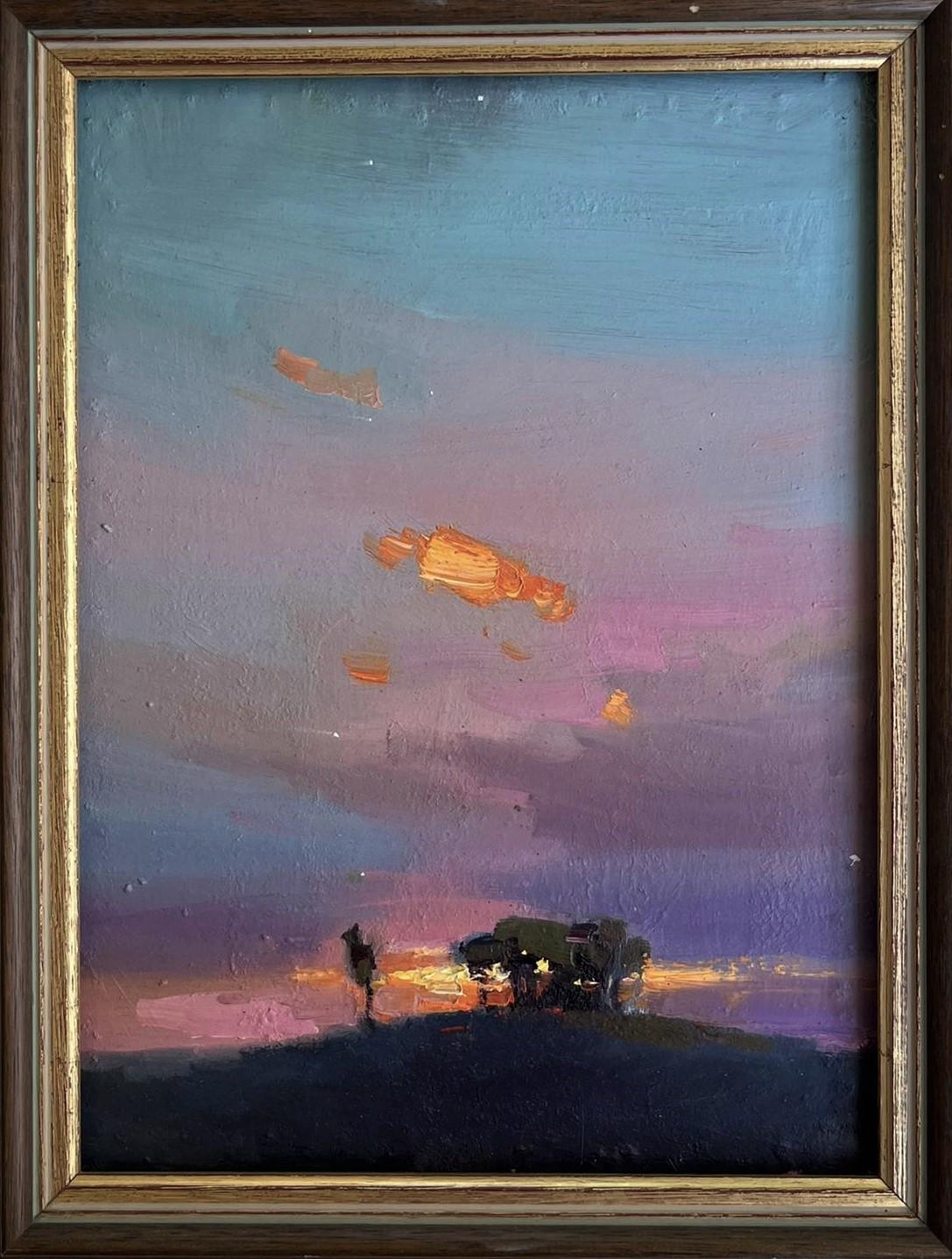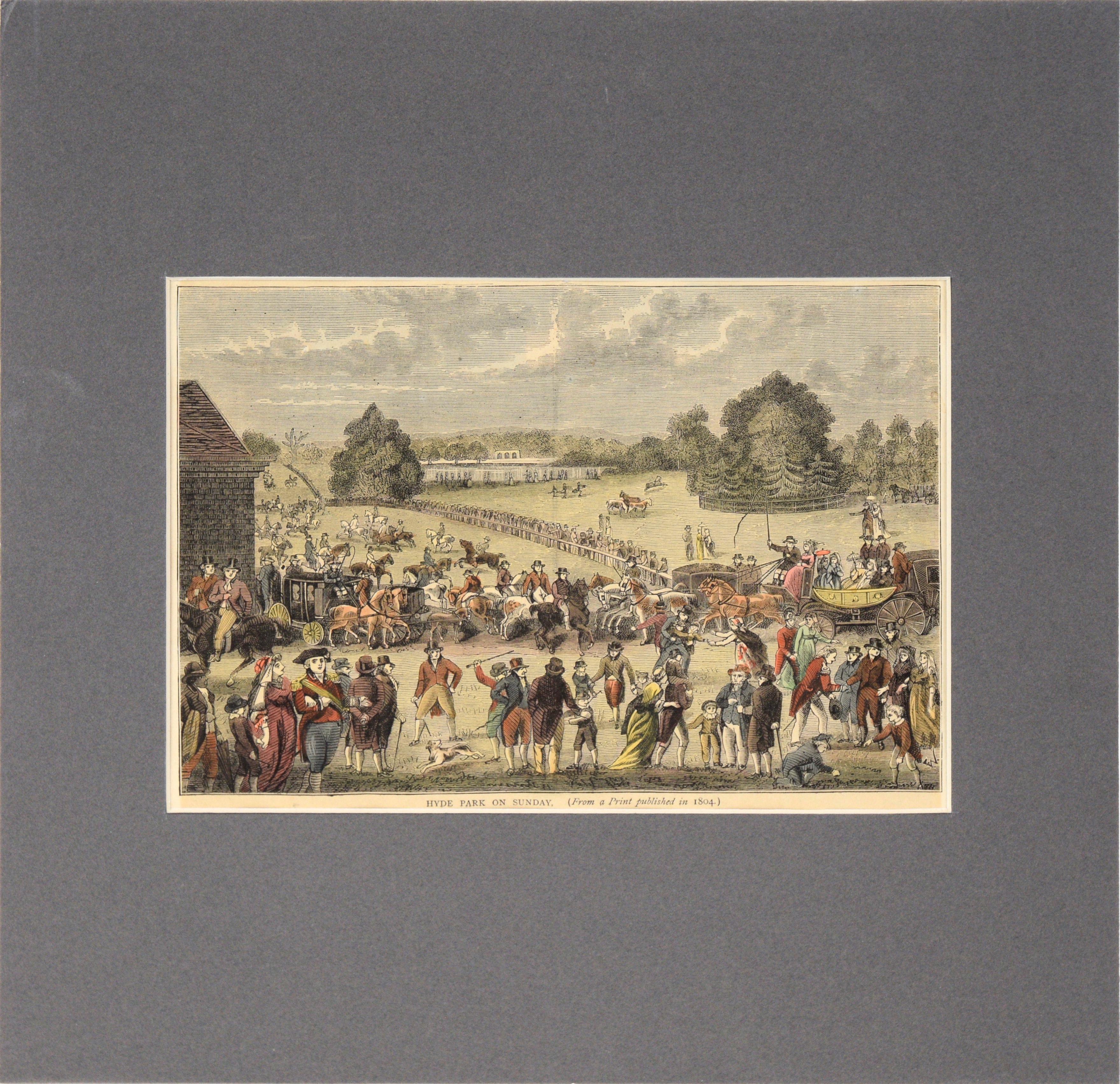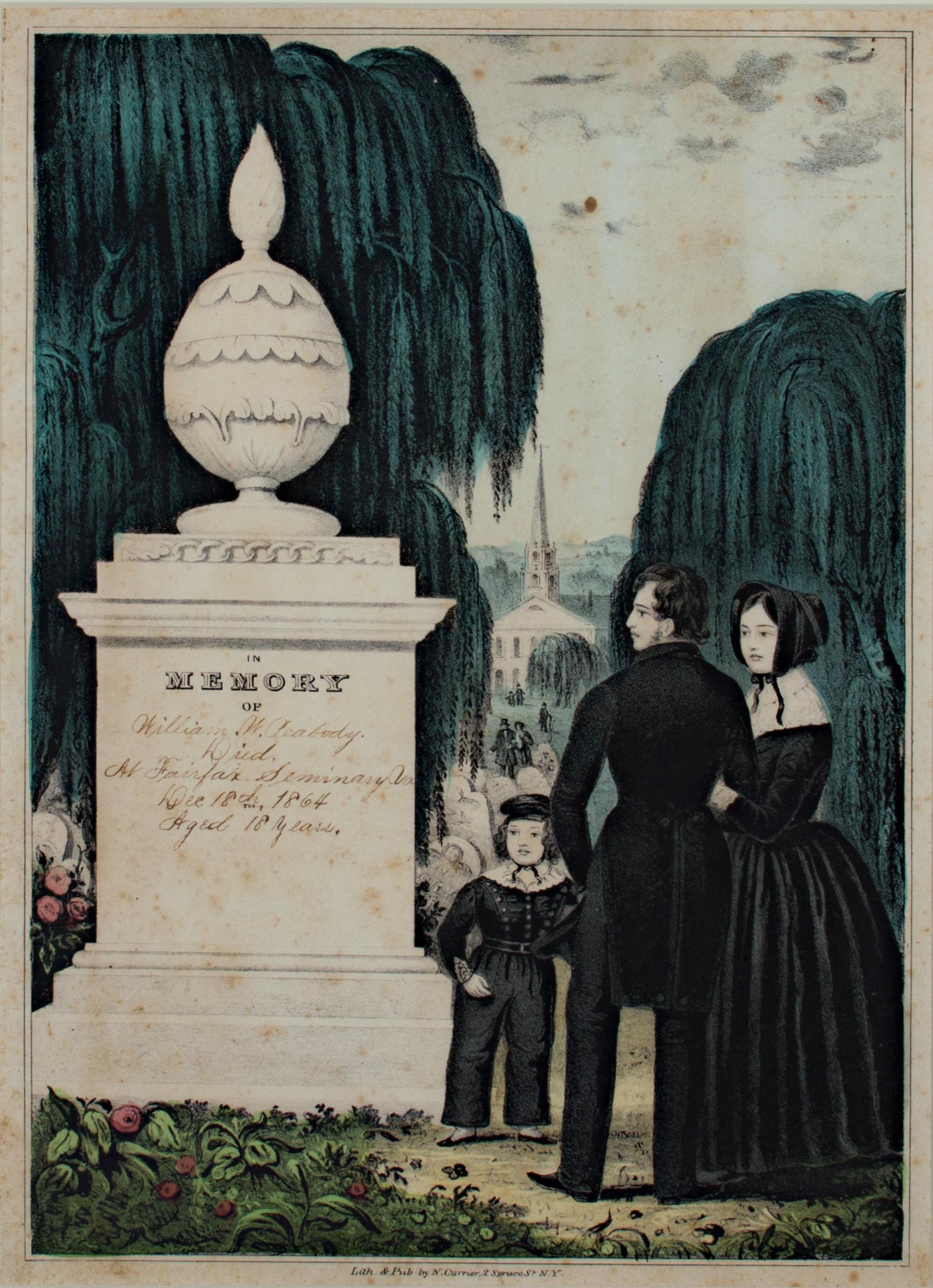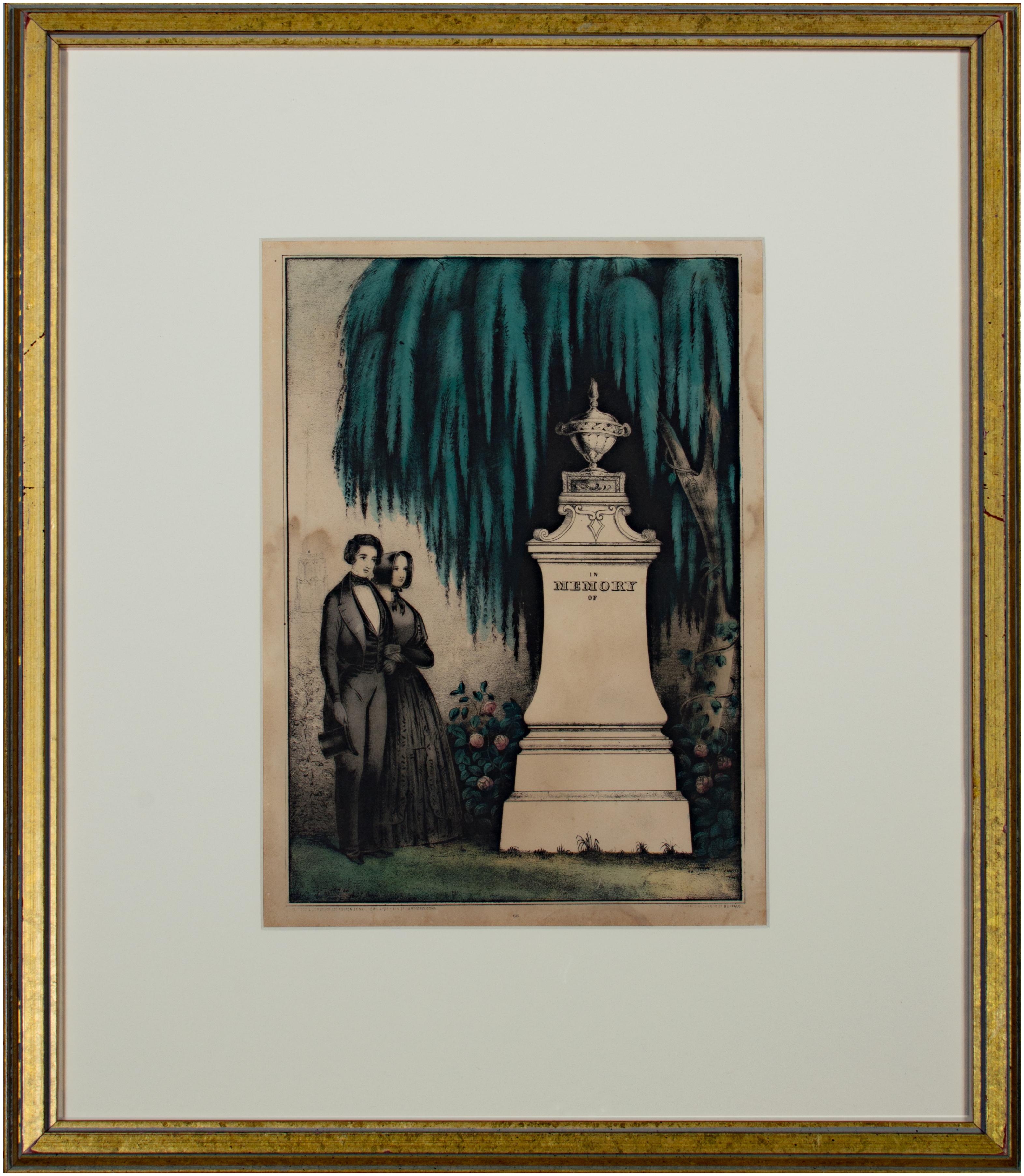Items Similar to Through the Clouds: The Magic of Stories in the Heavenly Realm/.Print on Canvas
Want more images or videos?
Request additional images or videos from the seller
1 of 10
Max Skoblinsky Through the Clouds: The Magic of Stories in the Heavenly Realm/.Print on Canvas 2022
2022
About the Item
"Through the Clouds: The Magic of Stories in the Heavenly Realm" .Print on Canvas /size for order
In this oil landscape painting, we immerse ourselves in the wondrous world of the sky and experience the emotional impact of its colors. The composition is dominated by a cloud that swiftly ascends towards the heights, touching the beautiful blue expanse above. The cloud becomes the protagonist and storyteller of this artwork, reflecting everything hidden beyond the horizon. The viewer, without seeing or knowing what lies beyond that horizon, completes the picture in their imagination, envisioning forests, lakes, and other enigmatic shapes concealed within the cloud's reflections.
The cloud serves as a portal to a realm of fantasies and dreams, where the viewer can soar high above the cloud as if floating in the heavens. By placing the painting below eye level, an impression is created as if one is situated above the clouds, flying and observing the world from the perspective of a bird's flight. The foreground of the painting adds an intriguing contrast with a sunbeam penetrating through the vibrant and luminous fields next to the dark forest.
All these elements come together to create a captivating artwork, brimming with the magic of stories told in the celestial expanses. It evokes a sense of elevation and mystery, awakening in our hearts a feeling of awe and wonder in the face of nature's grandeur. Journeying through the clouds elicits a blend of emotions, from delight to enigma, instilling in us the belief that every cloud holds a unique story waiting to be told.
The high quality of execution reflects the artist's skill and professionalism, making the artwork valuable for collectors and art enthusiasts.
Additionally, this painting has the potential for future value appreciation, making it attractive from a financial standpoint.
It also incorporates elements of art historical significance that contribute to the context of art history, and reflect current trends. This adds depth and interest to the artwork, attracting the attention of art historians and collectors.
❶ → .Print on Canvas /size for order
❷ → Protection for shipping
❸ → International Delivery Company – DHL/UPS/FEDEX
Welcome to the world of my art! I am an artist, and each of my oil paintings is a unique creation filled with passion and creative energy. My works are not just images on canvas; they reflect my individuality, vision of the world, and love for art.
The paintings I create immerse you in a world of colors, textures, and emotions. Every brushstroke and every combination of colors is an expression of my soul transformed into living art. I strive to convey the depth of my thoughts, feelings, and impressions on the canvas.
Acquiring my paintings offers you the opportunity to see the world through my eyes, to feel my passion for creativity, and experience the uniqueness of each artwork. Each of my pieces reflects my professionalism and individual style. They are one-of-a-kind and cannot be replicated.
I invite you to explore my creative world and choose a painting that inspires you and evokes special emotions. My works can not only adorn your interior but also serve as a source of inspiration and joy in your life.
And remember, acquiring my paintings can have potential financial benefits. As a young and promising artist, my fame and recognition may grow over time, which is reflected in the value of my work. Owning paintings by a young and talented artist can be more than just an appreciation of art; it can be an investment in the future.
- Creator:Max Skoblinsky (1966, Ukrainian)
- Creation Year:2022
- Dimensions:Height: 11.82 in (30 cm)Width: 15.75 in (40 cm)Depth: 1.19 in (3 cm)
- Medium:
- Movement & Style:
- Period:
- Framing:Framing Options Available
- Condition:
- Gallery Location:Sempach, CH
- Reference Number:1stDibs: LU2203213133872
About the Seller
4.9
Platinum Seller
These expertly vetted sellers are 1stDibs' most experienced sellers and are rated highest by our customers.
Established in 2019
1stDibs seller since 2022
286 sales on 1stDibs
Typical response time: 2 hours
- ShippingRetrieving quote...Ships From: Klingnau, Switzerland
- Return PolicyA return for this item may be initiated within 10 days of delivery.
More From This SellerView All
- Landscape with the Perfect Blend of Contrast and Harmony. Print on CanvasLocated in Sempach, LUIn this painting, an oil landscape unveils the magnificence of the sunset and the beauty of nature. The main focus is on the expansive sky, stretching across a significant portion of...Category
21st Century and Contemporary Romantic Landscape Prints
MaterialsColor, Oil
- Cozy Village Idyll: World of Harmony. Print on Canvas /size for orderLocated in Sempach, LUThis oil painting unveils a beautiful image of a country house, as if taken from a fairy tale. Its thatched roof and windows, surrounded by the aromas of a blooming garden, c...Category
21st Century and Contemporary Impressionist Landscape Prints
MaterialsPaint, Lights, Color
- Harmony Peaks: White Church Alpine Mountains. Landscape..Print on CanvasLocated in Sempach, LU"Harmony Peaks: White Church amidst Alpine Mountains" .Print on Canvas /size for order/YOU can order different sizes. The landscape conveys a sense of tranquility and harmony intric...Category
21st Century and Contemporary Impressionist Landscape Prints
MaterialsPaint, Lights, Color
- Notley Abbey in England Canvas Print by Simon Kozhin 70x90cmBy Simon KozhinLocated in Sempach, LUPRODUCT DETAILS Notley Abbey in England canvas print by Simon Kozhin. Bring your artwork to life with the texture and depth of a stretched canvas print. The image gets printed onto ...Category
2010s Impressionist Landscape Prints
MaterialsGiclée, Canvas
- Whale Painting Ocean ArtLocated in Sempach, LUIt is a GICLEE PRINT with my original oil painting Breaching Whale Signed by hand Olga Nikitina I give a hand touch to all my prints on canvas – I make a couple of strokes with palet...Category
2010s Impressionist Animal Prints
MaterialsGiclée
- STRENGTH. REBIRTH. PURIFY. Lotuses. Interior floral print by Maria MatveyevaLocated in Sempach, LUPrint on canvas with lotuses “STRENGTH. REBIRTH. PURIFY” in realism, which was painted by the artist Maria Matveyeva. The print size is 50x50cm plus ...Category
2010s Realist Interior Prints
MaterialsCanvas, Digital
You May Also Like
- Les Tuileries, Paris - Hand Colored Lithograph 1845-1860Located in Soquel, CALes Tuileries, Paris - Hand Colored Lithograph Delicate hand-colored lithograph of Tuileries Palace in Paris, France printed by Rose-Joseph Lemercier (French, 1803 - 1887). Published, Paris 1843 to 1867 by Hautecoeur Freres (Eugène and Alfred Hautecoeur (French). After Charles Riviere...Category
Mid-19th Century Romantic Landscape Prints
MaterialsPaper, Ink, Watercolor
- "Hyde Park on Sunday" - Hand Colored Etching from "Old and New London"Located in Soquel, CA"Hyde Park on Sunday" - Hand Colored Etching from "Old and New London" Detailed etching of a typical Sunday in Hyde Park around 1800 after an etching by Ed...Category
Late 19th Century Romantic Figurative Prints
MaterialsPaper, Ink, Watercolor
- Rue de la Paix, Paris - Hand Colored Lithograph 1845-1860Located in Soquel, CARue de la Paix, Paris - Hand Colored Lithograph 1845-1860 Delicate hand-colored lithograph of Rue de la Paix Palace in Paris, France printed by Rose-Joseph Lemercier (French, 1803 - 1887). Published, Paris 1843 to 1867 by Hautecoeur Freres (Eugène and Alfred Hautecoeur (French). After Charles Riviere...Category
Mid-19th Century Romantic Landscape Prints
MaterialsInk, Watercolor, Paper
- 'In Memory of William W. Peabody' original hand-colored lithograph by N. CurrierBy Nathaniel CurrierLocated in Milwaukee, WIThe present hand-colored lithograph was produced as part of the funeral and mourning culture in the United States during the 19th century. Images like this were popular as ways of remembering loved ones, an alternative to portraiture of the deceased. This lithograph shows a man, woman and child in morning clothes next to an urn-topped stone monument. Behind are additional putto-topped headstones beneath weeping willows, with a steepled church beyond. The monument contains a space where a family could inscribe the name and death dates of a deceased loved one. In this case, it has been inscribed to a young Civil War soldier: William W. Peabody Died at Fairfax Seminary, VA December 18th, 1864 Aged 18 years The young Mr. Peabody probably died in service for the Union during the American Civil War. Farifax Seminary was a Union hospital and military headquarters in Alexandria, Virginia. The hospital served nearly two thousand soldiers during the war time. Five hundred were also buried on the Seminary's grounds. 13.75 x 9.5 inches, artwork 23 x 19 inches, frame Published before 1864 Inscribed bottom center "Lith. & Pub. by N. Currier. 2 Spruce St. N.Y." Framed to conservation standards using 100 percent rag matting and TruVue Conservation Clear glass, housed in a gold gilded moulding. Nathaniel Currier was a tall introspective man with a melancholy nature. He could captivate people with his piercing stare or charm them with his sparkling blue eyes. Nathaniel was born in Roxbury, Massachusetts on March 27th, 1813, the second of four children. His parents, Nathaniel and Hannah Currier, were distant cousins who lived a humble yet spartan life. When Nathaniel was eight years old, tragedy struck. Nathaniel’s father unexpectedly passed away leaving Nathaniel and his eleven-year-old brother Lorenzo to provide for the family. In addition to their mother, Nathaniel and Lorenzo had to care for six-year-old sister Elizabeth and two-year-old brother Charles. Nathaniel worked a series of odd jobs to support the family, and at fifteen, he started what would become a life-long career when he apprenticed in the Boston lithography shop of William and John Pendleton. A Bavarian gentleman named Alois Senefelder invented lithography just 30 years prior to young Nat Currier’s apprenticeship. While under the employ of the brothers Pendleton, Nat was taught the art of lithography by the firm’s chief printer, a French national named Dubois, who brought the lithography trade to America. Lithography involves grinding a piece of limestone flat and smooth then drawing in mirror image on the stone with a special grease pencil. After the image is completed, the stone is etched with a solution of aqua fortis leaving the greased areas in slight relief. Water is then used to wet the stone and greased-ink is rolled onto the raised areas. Since grease and water do not mix, the greased-ink is repelled by the moisture on the stone and clings to the original grease pencil lines. The stone is then placed in a press and used as a printing block to impart black on white images to paper. In 1833, now twenty-years old and an accomplished lithographer, Nat Currier left Boston and moved to Philadelphia to do contract work for M.E.D. Brown, a noted engraver and printer. With the promise of good money, Currier hired on to help Brown prepare lithographic stones of scientific images for the American Journal of Sciences and Arts. When Nat completed the contract work in 1834, he traveled to New York City to work once again for his mentor John Pendleton, who was now operating his own shop located at 137 Broadway. Soon after the reunion, Pendleton expressed an interest in returning to Boston and offered to sell his print shop to Currier. Young Nat did not have the financial resources to buy the shop, but being the resourceful type he found another local printer by the name of Stodart. Together they bought Pendleton’s business. The firm ‘Currier & Stodart’ specialized in "job" printing. They produced many different types of printed items, most notably music manuscripts for local publishers. By 1835, Stodart was frustrated that the business was not making enough money and he ended the partnership, taking his investment with him. With little more than some lithographic stones, and a talent for his trade, twenty-two year old Nat Currier set up shop in a temporary office at 1 Wall Street in New York City. He named his new enterprise ‘N. Currier, Lithographer’ Nathaniel continued as a job printer and duplicated everything from music sheets to architectural plans. He experimented with portraits, disaster scenes and memorial prints, and any thing that he could sell to the public from tables in front of his shop. During 1835 he produced a disaster print Ruins of the Planter's Hotel, New Orleans, which fell at two O’clock on the Morning of the 15th of May 1835, burying 50 persons, 40 of whom Escaped with their Lives. The public had a thirst for newsworthy events, and newspapers of the day did not include pictures. By producing this print, Nat gave the public a new way to “see” the news. The print sold reasonably well, an important fact that was not lost on Currier. Nat met and married Eliza Farnsworth in 1840. He also produced a print that same year titled Awful Conflagration of the Steamboat Lexington in Long Island Sound on Monday Evening, January 18, 1840, by which melancholy occurrence over One Hundred Persons Perished. This print sold out very quickly, and Currier was approached by an enterprising publication who contracted him to print a single sheet addition of their paper, the New York Sun. This single page paper is presumed to be the first illustrated newspaper ever published. The success of the Lexington print launched his career nationally and put him in a position to finally lift his family up. In 1841, Nat and Eliza had their first child, a son they named Edward West Currier. That same year Nat hired his twenty-one year old brother Charles and taught him the lithography trade, he also hired his artistically inclined brother Lorenzo to travel out west and make sketches of the new frontier as material for future prints. Charles worked for the firm on and off over the years, and invented a new type of lithographic crayon which he patented and named the Crayola. Lorenzo continued selling sketches to Nat for the next few years. In 1843, Nat and Eliza had a daughter, Eliza West Currier, but tragedy struck in early 1847 when their young daughter died from a prolonged illness. Nat and Eliza were grief stricken, and Eliza, driven by despair, gave up on life and passed away just four months after her daughter’s death. The subject of Nat Currier’s artwork changed following the death of his wife and daughter, and he produced many memorial prints and sentimental prints during the late 1840s. The memorial prints generally depicted grief stricken families posed by gravestones (the stones were left blank so the purchasers could fill in the names of the dearly departed). The sentimental prints usually depicted idealized portraits of women and children, titled with popular Christian names of the day. Late in 1847, Nat Currier married Lura Ormsbee, a friend of the family. Lura was a self-sufficient woman, and she immediately set out to help Nat raise six-year-old Edward and get their house in order. In 1849, Lura delivered a son, Walter Black Currier, but fate dealt them a blow when young Walter died one year later. While Nat and Lura were grieving the loss of their new son, word came from San Francisco that Nat’s brother Lorenzo had also passed away from a brief illness. Nat sank deeper into his natural quiet melancholy. Friends stopped by to console the couple, and Lura began to set an extra place at their table for these unexpected guests. She continued this tradition throughout their lives. In 1852, Charles introduced a friend, James Merritt Ives, to Nat and suggested he hire him as a bookkeeper. Jim Ives was a native New Yorker born in 1824 and raised on the grounds of Bellevue Hospital where his father was employed as superintendent. Jim was a self-trained artist and professional bookkeeper. He was also a plump and jovial man, presenting the exact opposite image of his new boss. Jim Ives met Charles Currier through Caroline Clark, the object of Jim’s affection. Caroline’s sister Elizabeth was married to Charles, and Caroline was a close friend of the Currier family. Jim eventually proposed marriage to Caroline and solicited an introduction to Nat Currier, through Charles, in hopes of securing a more stable income to support his future wife. Ives quickly set out to improve and modernize his new employer’s bookkeeping methods. He reorganized the firm’s sizable inventory, and used his artistic skills to streamline the firm’s production methods. By 1857, Nathaniel had become so dependent on Jims’ skills and initiative that he offered him a full partnership in the firm and appointed him general manager. The two men chose the name ‘Currier & Ives’ for the new partnership, and became close friends. Currier & Ives produced their prints in a building at 33 Spruce Street where they occupied the third, fourth and fifth floors. The third floor was devoted to the hand operated printing presses that were built by Nat's cousin, Cyrus Currier, at his shop Cyrus Currier & Sons in Newark, NJ. The fourth floor found the artists, lithographers and the stone grinders at work. The fifth floor housed the coloring department, and was one of the earliest production lines in the country. The colorists were generally immigrant girls, mostly German, who came to America with some formal artistic training. Each colorist was responsible for adding a single color to a print. As a colorist finished applying their color, the print was passed down the line to the next colorist to add their color. The colorists worked from a master print displayed above their table, which showed where the proper colors were to be placed. At the end of the table was a touch up artist who checked the prints for quality, touching-in areas that may have been missed as it passed down the line. During the Civil War, demand for prints became so great that coloring stencils were developed to speed up production. Although most Currier & Ives prints were colored in house, some were sent out to contract artists. The rate Currier & Ives paid these artists for coloring work was one dollar per one hundred small folios (a penny a print) and one dollar per one dozen large folios. Currier & Ives also offered uncolored prints to dealers, with instructions (included on the price list) on how to 'prepare the prints for coloring.' In addition, schools could order uncolored prints from the firm’s catalogue to use in their painting classes. Nathaniel Currier and James Merritt Ives attracted a wide circle of friends during their years in business. Some of their more famous acquaintances included Horace Greeley, Phineas T. Barnum, and the outspoken abolitionists Rev. Henry Ward, and John Greenleaf Whittier (the latter being a cousin of Mr. Currier). Nat Currier and Jim Ives described their business as "Publishers of Cheap and Popular Pictures" and produced many categories of prints. These included Disaster Scenes, Sentimental Images, Sports, Humor, Hunting Scenes, Politics, Religion, City and Rural Scenes, Trains, Ships, Fire Fighters, Famous Race Horses, Historical Portraits, and just about any other topic that satisfied the general public's taste. In all, the firm produced in excess of 7500 different titles, totaling over one million prints produced from 1835 to 1907. Nat Currier retired in 1880, and signed over his share of the firm to his son Edward. Nat died eight years later at his summer home 'Lion’s Gate' in Amesbury, Massachusetts. Jim Ives remained active in the firm until his death in 1895, when his share of the firm passed to his eldest son, Chauncey. In 1902, faced will failing health from the ravages of Tuberculosis, Edward Currier sold his share of the firm to Chauncey Ives...Category
Mid-19th Century Romantic Figurative Prints
MaterialsWatercolor, Lithograph
- 'In Memory of (66)' original Kellogg & Comstock hand-colored mourning lithographLocated in Milwaukee, WIThe present hand-colored lithograph was produced as part of the funeral and mourning culture in the United States during the 19th century. Before the printmaking boom of the 1830s, however, such inexpensive memorial images were not widely available. These prints became popular as ways of remembering loved ones, an alternative to portraiture of the deceased or to meticulous hand-embroidered memorials often made by female academy students. In the image, the urn-topped monument contains a space where a family could inscribe the name and death dates of a deceased loved one, though this example was never used. In the variations of this image type produced by the Kellogg...Category
Mid-19th Century Romantic Figurative Prints
MaterialsWatercolor, Lithograph
- "Only a Dream Away" Hawaiian Landscape Hand-Augmented Giclee Canvas in Koa FrameLocated in Soquel, CA"Only a Dream Away" Hawaiian Landscape Hand-Augmented Giclee in Koa Frame Dramatic and stunning tropical scene by Ray Gonzalez Tabora (Hawaiian-Ameri...Category
Late 20th Century Romantic Landscape Prints
MaterialsGiclée, Canvas, Acrylic





